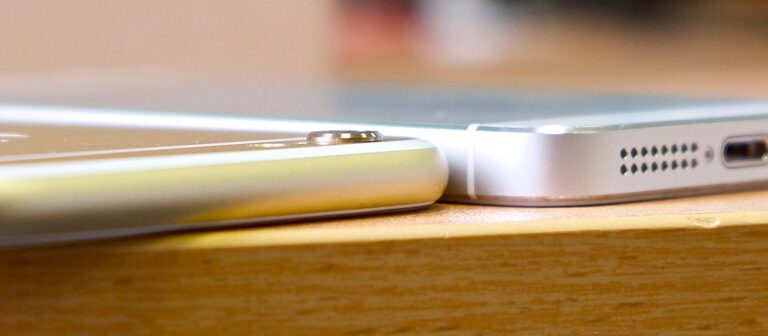Printed solar cells thinner than your hair could power your phone
Nanotechnology, a science that focuses on understanding materials on an atomic scale, is helping researchers and businesses introduce new technologies that could transform our economy into a greener, less wasteful one.
‘Nanotechnology as a field has an enormous role to play in moving our planet to sustainable and intelligent living,’ said Professor Martin Curley from Maynooth University in Ireland, speaking on 21 June at the EuroNanoForum conference, in Malta, organised by the Maltese Presidency of the Council of the European Union and co-funded by the EU.
He explained to an audience of businesspeople and researchers that nanotechnology holds the potential to spark ‘an explosion of innovation’.
One area where this innovation could have its biggest impact is with how we generate, use and consume energy.
Speaking at a session dedicated to nanotechnology in clean energy generation, Prof. Alejandro Pérez-Rodríguez, from the department of electronics at the University of Barcelona, Spain, said solar energy and photovoltaic (PV) technology itself could be considered a nanotechnology sector.
‘In all PV technologies and devices we put some nanotechnology … If we want to move to devices with higher functionality, lower weight, higher flexibility, different colours, then we need to integrate more nanotechnologies into their materials and architecture.’
At the same session, Artur Kupczunas, co-founder of Saule Technologies, explained how his company is using nanotechnology to print solar panels using perovskite crystals, a cheap and highly sensitive mineral that was first found in the Ural Mountains of Russia in 1839.
They produce thin layers of solar cells that are somewhere near one-tenth of the thickness of a single human hair. This innovation could greatly reduce the cost of producing solar energy while transforming any surface into a solar panel, from walls and road-side barriers to the surface of your smartphone.
‘The most interesting factor is the (reduction of) overall costs,’ said Kupczunas, explaining that this means the technology could be easily scaled out across the market.
Fuel cell
At the same session, John Bøgild Hansen, a senior scientist from Haldor Topsøe, a Danish chemical engineering company, explained how they have been using nanotechnology to look at the atomic level of gases in order to better understand their properties.
This knowledge contributed to creating a fuel cell for greener biofuel production. Their process extracts pure hydrogen from plant materials while reusing any CO2 emissions created during the process to help power the production cycle, preventing any fossil fuels entering the atmosphere.
This, he believes, is a way to ‘break the bottleneck’ on biofuels which currently struggle to get public and private support.
“
‘If we want to move to devices with higher functionality, lower weight, higher flexibility, different colours, then we need to integrate more nanotechnologies into their materials and architecture.’
‘If we want the conveniences we have today from liquid energy carriers (oil, natural gas etc.) for transport … hydrocarbons (biogas) are the best,’ he said.
Storing wind and solar energy during unstable weather is another gap in our sustainable energy future.
Professor Magnus Berggren and his team at Sweden’s Linköping University are looking into using nanotechnology to harness the molecular properties of a plastic conductive material called PEDOT:PSS. They combine this knowledge with nanocellulose, a product made from plants or oil, to create an organic material that stores energy.
‘If we make a (PEDOT:PSS) battery the size of a refrigerator it can store (enough energy for) the needs of a family in a house or an apartment for a day,’ he said.
Because of its ability to charge quickly, it could be a way to compensate for the under- or over- production of wind and solar energy during calm or cloudy days. This, in turn, could break cities’ dependency on fossil fuels.
‘You need to store when you are over-producing and release when you are under-producing,’ Prof. Berggren explained.
Waste-free
Nanotechnology also has the ability to make technology smaller, extend the life-cycle of electronics, improve manufacturing processes, all of which would mean less waste has to go to the landfill.
Speaking at one of the sessions, Joe Murphy, from the Ellen MacArthur Foundation, an association in the UK dedicated to promoting waste as a resource, explained nanotechnologies ‘may enable us to create a new material palette’ that allows future products to be recycled more easily.
‘At the moment we have a lot of barriers to recycling … nanotechnology may enable us to do more,’ he said.
If you liked this article, please consider sharing it on social media.
The Issue
More than 32 million people in the EU are employed in the manufacturing industry and 75 % of EU exports are manufactured products. But Europe’s position as an industrial powerhouse has been eroding in recent years and its leadership in many important sectors is constantly challenged.
Nanotechnology could reverse this trend by increasing the competitiveness of these different sectors, from energy and pharmaceuticals to electronics and textiles.
The European Commission aims to support nanotechnologies within a EUR 1.8 billion fund for 2018-2020, which will also support next-generation materials as well as biotechnology and new manufacturing processes.


